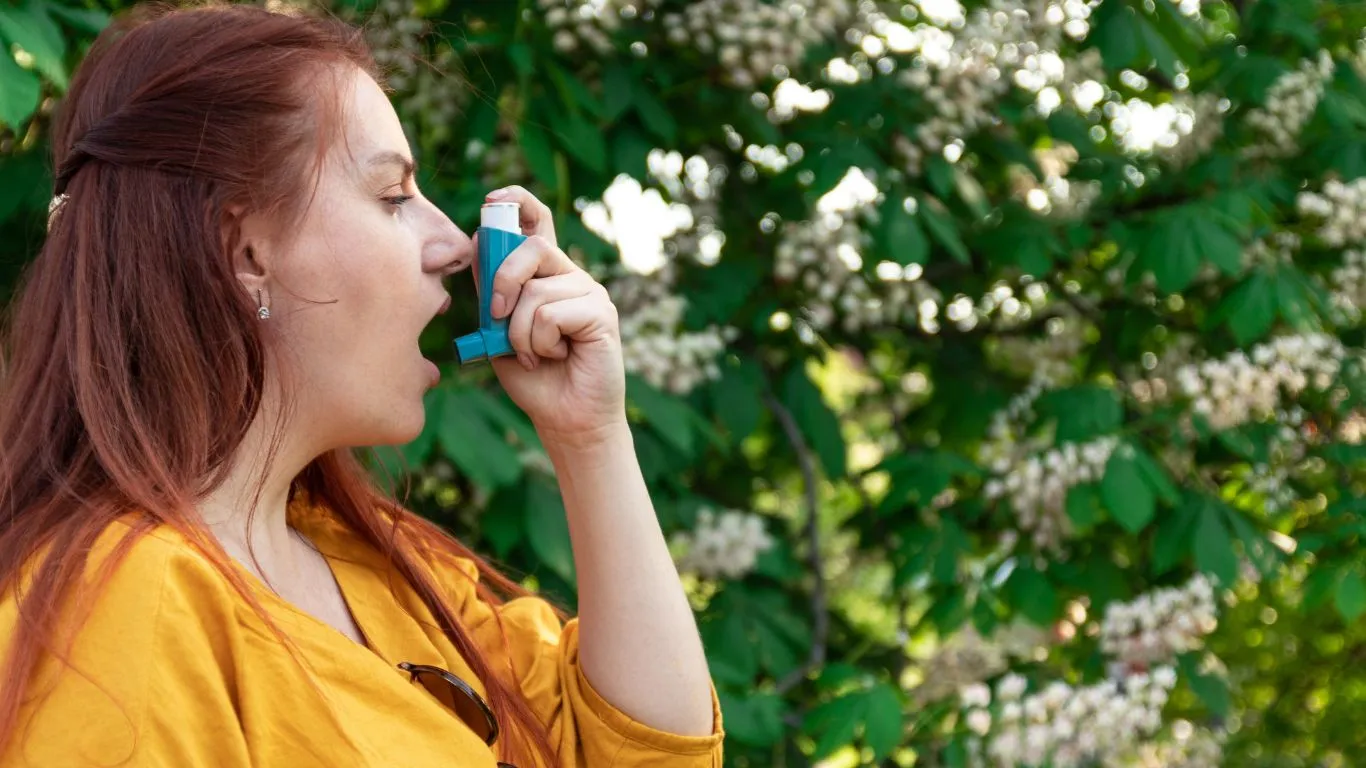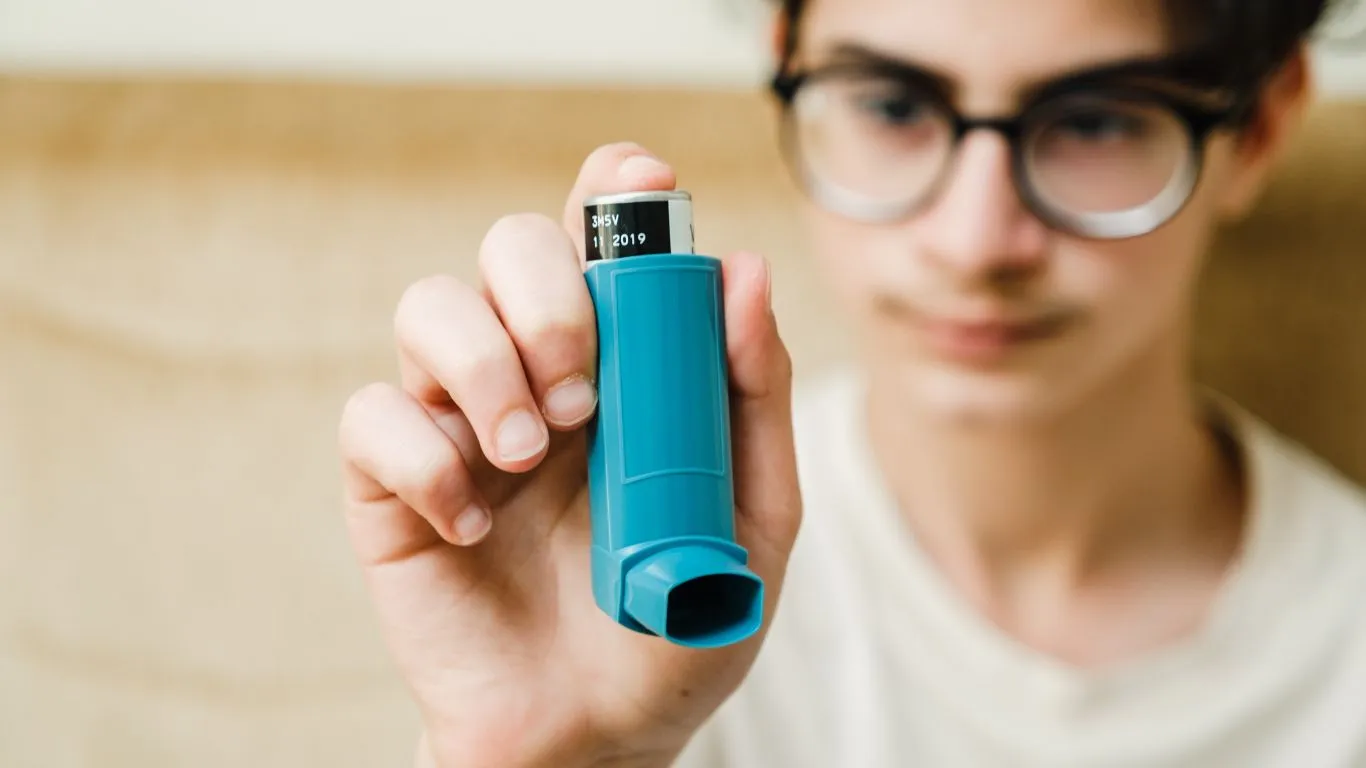Best Face Masks for Asthma During Cold Weather That Actually Work
Let’s be real—cold weather and asthma are not friends. As a pulmonary nurse practitioner, I’ve seen firsthand how frigid air can trigger wheezing, tightness in the chest, and just that overall struggle to breathe comfortably. That’s why finding the best face masks for asthma during cold weather isn’t just a comfort issue—it can be a game changer for your daily health and freedom. I’ve helped many patients (and yes, even used a few of these myself on brisk morning commutes) figure out what actually works, and what’s just fluff. So, let’s talk face masks—what to look for, what to avoid, and what’s actually worth tossing into your winter coat pocket.
Why Cold Air Triggers Asthma Symptoms

Cold air doesn’t just feel icy on your skin—it’s rough on your airways too. The cold, dry air can dry out your bronchial tubes and cause them to tighten, which leads to that telltale asthma cough or shortness of breath. I’ve had patients who were doing fine in the fall, only to start experiencing flares as soon as the first frost hits.
Here’s what’s happening inside your lungs:
- Bronchoconstriction: Your airways narrow in response to the cold, making it harder to breathe.
- Loss of humidity: Cold air lacks moisture, which can dry and irritate your lungs.
- Increased mucus: Your body may respond by producing more mucus, leading to coughing and congestion.
Wearing a mask creates a small warm air pocket in front of your nose and mouth—basically, your own little humidifier. But not just any mask will do the trick.
What to Look For in the Best Face Masks for Asthma During Cold Weather

1. Breathability Without Letting in the Cold
This is huge. You want a mask that keeps cold air out but still lets you breathe comfortably. I always recommend layered fabric—not too thick, not too thin. Think fleece-lined cotton or performance fabrics like neoprene blends.
2. Moisture-Retaining Interior
One trick I’ve learned from long walks between clinics in the winter: choose a mask with a soft, moisture-retaining lining. Not only does this help trap warmth, but it also keeps the air you’re breathing humidified. No more desert-dry lungs!
3. Secure Fit Without Tight Pressure
Asthma sufferers don’t need anything adding pressure around the mouth or nose. A snug but comfortable fit is essential—especially one that stays put if you’re talking or moving around. I’ve seen too many masks ride up or down mid-conversation, making them practically useless.
4. Bonus Features: Filters & Valves
For some of my more sensitive patients, masks with built-in filters or breathing valves have been game changers. They can help reduce inhalation of particulates, and some even warm the air slightly before it enters your lungs. Just make sure the valve doesn’t let in unfiltered air—you want warmth and protection, not a direct blast of frosty wind.
Top Materials That Actually Help (And Ones to Avoid)

Great Options:
- Fleece: Soft, warm, and breathable. A solid winter go-to.
- Cotton blends: Comfortable and great for layering.
- Neoprene: Water-resistant and excellent for blocking wind.
Skip These:
- Wool (unlined): Can be itchy and irritating against sensitive skin or lungs.
- Synthetic-only masks: May trap moisture and cause irritation over time.
- Plastic inserts: Avoid anything rigid that restricts airflow or adds pressure on the chest.
I once had a patient try one of those trendy “fashion” masks made from shiny synthetic fabric—let’s just say, she didn’t make it past the front porch before needing her inhaler. Stick to function first, fashion second. Thankfully, there are plenty of masks out there now that do both.
My Go-To Picks: Best Face Masks for Asthma During Cold Weather

Now that we’ve covered what makes a face mask effective in cold weather, let’s get into some actual recommendations. These aren’t just pulled from a list—I’ve either used them myself or recommended them to patients who came back raving (and breathing easier, thank you very much!).
1. AirTrim Cold Weather Mask
This one is an absolute favorite among my winter hikers and joggers with asthma. It’s designed specifically for cold environments and actually uses a filter that helps warm the air before it hits your lungs. Genius. The snug fit keeps icy drafts out, but it’s still breathable enough that you’re not gasping for air. I even wore it on a brisk morning dog walk once—it felt like I was breathing spring air.
2. TheraMask Fleece Face Mask
Soft fleece lining? Check. Adjustable ear loops? Check. Breathable and reusable? Yes, please. This one’s a patient favorite, especially for folks who don’t want to deal with filter inserts. It’s also a little more stylish—because hey, no one wants to feel like they’re walking around in medical gear 24/7.
3. Respro Techno Mask
This one’s a bit more high-tech, but totally worth it for anyone with moderate to severe asthma. It features two valves that help exhale CO₂ and prevent moisture buildup, which is a common issue in colder weather. It also filters out dust and other airborne irritants, which makes it great for people in urban environments or walking near traffic. One of my patients with exercise-induced asthma swears by this during her winter runs.
Real Talk: What My Patients Have Taught Me

I can’t even count how many conversations I’ve had with patients about cold weather asthma flares. One thing that always comes up? Trial and error. What works for one person might not work for another. Some need warmth above all else, others need flexibility or something they can breathe through during a walk to the bus stop.
Here are a few tips I’ve learned thanks to real-life feedback from folks who live this every winter:
- Try it at home first. Test a new mask indoors before you go out into freezing air. Make sure it doesn’t cause discomfort or restrict your breathing.
- Always have a backup. Keep an extra mask in your bag or car. Wet masks can become irritating, especially in freezing temps.
- Pair with a scarf. Some of my patients double-layer with a scarf on extra cold days. It adds insulation and a little backup if the mask shifts.
And let’s not forget the most important thing: listen to your body. If a mask makes you feel short of breath or anxious, it’s not the right one. Comfort and breathability are key when you’re managing a chronic condition like asthma.
Expert Tip: How to Keep Warm Air Flowing All Day

Here’s a trick I often share with new asthma patients during the colder months: warm up your airways before heading out. Use a rescue inhaler 15 minutes before leaving the house if prescribed, and take a few slow, deep breaths indoors before stepping outside.
Also—this sounds simple, but it’s effective—talk less outside. The more you talk, the more cold air you’re pulling in quickly, which can trigger bronchospasms. A good mask helps, but pairing it with mindful breathing habits makes all the difference.
If you’re using a mask regularly during winter and it starts to feel less effective, consider washing it or replacing filters more often. Build-up from condensation or dirt can make even the best mask feel suffocating after a while.
Common Mistakes People Make With Cold Weather Masks
Even the best face masks for asthma during cold weather can fall short if not used correctly. Here are a few avoidable missteps I’ve seen over the years:
- Wearing it too loose: Gaps let in cold air, defeating the purpose entirely.
- Using masks meant for summer or COVID only: Those thin surgical-style masks don’t provide insulation or retain moisture.
- Not drying masks properly: Moisture build-up can lead to bacterial growth or just make your face feel clammy and gross. No thanks.
It might take a few tries to find “the one,” but once you’ve got a solid mask that works for your breathing and your lifestyle, it’s like night and day. You can step outside with confidence knowing you’re protected—not just from the cold, but from the triggers that usually derail your day.
How to Care for Your Mask and Maximize Its Effectiveness

Now that you’ve got your ideal mask picked out, let’s talk about maintenance. I can’t tell you how many patients I’ve seen doing all the right things—wearing the mask regularly, avoiding cold air exposure—only to sabotage their efforts by not taking care of the mask itself.
Trust me, it makes a huge difference. A well-maintained mask not only works better but also feels better against your skin and lungs. Here’s what I always recommend:
1. Wash Regularly
Sounds obvious, but it’s often overlooked. Reusable fabric masks should be washed after every use—or at least every other day—especially if you’re using them for walks or errands where moisture builds up. Use a gentle detergent and let it air dry completely before wearing again. No one wants a damp, musty mask near their face.
2. Rotate Between Two or More
Having a backup or two makes it easier to rotate them out and avoid panic when one is still drying. I personally keep one in my coat pocket and one in my work bag at all times during the winter months.
3. Replace Filters on Schedule
If you’re using a mask with a filter insert (like the Respro or other tech masks), check the manufacturer’s guide for how often to replace them. In general, I tell my patients every 1–2 weeks if used daily. Don’t stretch it too long—filters lose effectiveness and can even become irritants over time.
4. Store Masks in a Clean, Dry Case
It’s tempting to just toss your mask into your purse or car console (guilty here!), but that’s how they get dirty fast. Keep a small breathable pouch or clean container for storage. Your lungs will thank you.
Frequently Asked Questions About Asthma and Cold Weather Face Masks

Do I need a face mask if I already wear a scarf in the winter?
Scarves help, but they’re not designed to retain moisture or warm the air effectively like a face mask can. A mask gives you more targeted protection, especially if it’s designed for people with asthma. Scarves are great as a backup layer, though!
Will wearing a face mask make it harder to breathe?
If it does, that’s a red flag. The best face masks for asthma during cold weather are breathable and supportive—not restrictive. Look for lightweight materials with some stretch, and always test it indoors first. If you feel winded or anxious wearing it, try a different style or fit.
Can I wear these masks while exercising outdoors?
Yes, absolutely—but choose wisely. Masks with valves or made for sport (like the AirTrim) are ideal. A snug, insulated mask can actually make winter workouts more bearable. Just monitor how you feel, especially during cardio. I always remind my more active patients to take it slow and focus on controlled breathing.
Do kids with asthma need special masks?
Yes, they often need smaller sizes and softer fabrics. Look for kid-specific designs that are warm, washable, and fit snugly without slipping. Always supervise their use, especially during play or outdoor time. Bonus tip from one of my pediatric patients: choose a fun print—it makes mask-wearing way more appealing.
References
Disclaimer
This article is for informational purposes only and does not substitute professional medical advice, diagnosis, or treatment. Always consult with a licensed healthcare provider regarding any medical concerns, especially when dealing with asthma or respiratory issues in cold weather.

Bianca Nala is a compassionate Nurse Practitioner with a strong background in primary and respiratory care. As a health writer for Healthusias.com, she combines her clinical expertise with a talent for clear, relatable storytelling to help readers better understand their health. Bianca focuses on topics like asthma, COPD, chronic cough, and overall lung health, aiming to simplify complex medical topics without losing accuracy. Whether she’s treating patients or writing articles, Bianca is driven by a single goal: making quality healthcare knowledge accessible to everyone.






